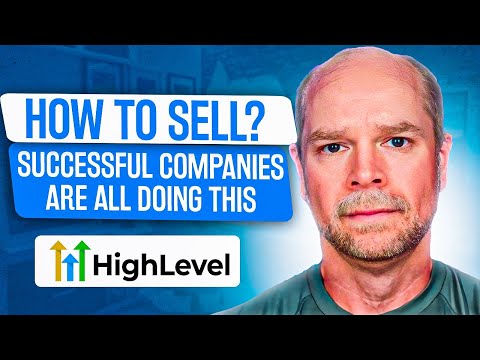Building a company’s tech stack on MACH principles will enhance the e-commerce experience and set companies up for success.
MACH — an acronym for Microservices, API-first, Cloud-native SaaS, and Headless architecture — is a fundamental concept for modern organizations’ digital strategy. With it, every component is pluggable, scalable, replaceable, and can be continuously improved through agile development.
It is designed for seamless integration, so these modular solutions let businesses detach from legacy tools and freely choose the best-in-class technologies available. This composable, swappable architecture empowers companies to continuously evolve their digital ecosystems, piece by piece, without the need for disruptive, risky, and costly re-platforming projects.
According to the MACH Alliance, a MACH approach enables businesses to stay agile and responsive within the fast-paced digital landscape. It not only provides the technical flexibility modern brands need to innovate but also cultivates an organizational culture that values experimentation.
MACH began as a way to define technical architecture. It now enables organizations to transform their technology to future-proof their business, align their mindset and organizational culture, and further outpace competitors in an already digitally accelerated world, offered Casper Rasmussen, president of the MACH Alliance.
“MACH is designed to promote a business-first mindset. It offers adaptability, scalability, and agility, as this approach effectively ‘composes’ a digital ecosystem from small independent services that can be developed, deployed, and scaled individually, with a focus on realizing business outcomes,” he told the E-Commerce Times.
MACH’s Edge Over Monolithic Platforms
Rasmussen noted that MACH’s architecture differs from other technology stacks. It relies on an architecture mindset where all components are tightly integrated.

“This inflexibility challenges adaptation, scaling, connection, and optimization of the digital experience,” he cautioned.
In addition, organizations often need to limit their ambition and digital strategies to match the functions and limitations of a cumbersome, standardized technology mindset. Instead, technology has to be a core strategic asset of the business, a key differentiator and enabler.
“If not, technology forces the business and brand to join the race to parity,” said Rasmussen.
Deep Dive Discovers Details
We asked Rasmussen to help us understand more of MACH’s intricacies. He offered three primary benefits of adopting its principles.
- Composability: Empowering businesses to be more innovative and responsive to the needs of the business and market demands.
- Freedom to innovate and experiment: Modular designs and iterative execution allow teams to test different configurations without disrupting the entire architecture.
- Better interoperability: The Alliance rallies around standards to enable simplicity, brand adoption, and speed to market across the ecosystem.
Q&A on Meeting Opportunities and Challenges in 2025
To further understand how MACH principles deliver measurable value, we asked Rasmussen to share his insights on their real-world impact and potential to address future challenges.
E-Commerce Times: Although membership costs are not publicly disclosed, how should businesses value the ROI of adopting the MACH architecture?
Casper Rasmussen: In the MACH Alliance 2024 Global Annual Research report, we observed that MACH adoption saw stable growth despite economic volatility. This is further evidenced by 85% of the respondents achieving ROI on their MACH investment.
MACH enables an incremental approach that prioritizes outcomes over output. This mindset impacts how businesses quantify cost and investment in MACH, which thereby has to consider opportunity cost, efficiency gains in digital execution and activation, and technology investments.
How does MACH enhance the e-commerce experience and set companies up for success?
Rasmussen: MACH and composable approaches are business critical for modern e-commerce organizations to ensure they have the flexibility to innovate rapidly. The technology allows them to respond to market changes and customer demands while internally harnessing operational agility and efficiency.
How beneficial is the MACH stack to cross-industry adoption?
Rasmussen: The benefits of MACH and a composable approach extend far beyond e-commerce and retail. We see a wide range of successful use cases across diverse industries, including financial services, manufacturing, healthcare, travel and tourism, and high-tech. We have several case studies from brands such as Volkswagen in automotive, Unobravo in health care, Pllay in entertainment, and easyJet in travel and tourism.
These companies are looking to innovate, enhance customer experiences, and stay competitive in the digital landscape. The MACH stack’s modular, flexible, and integrated approach makes it an appealing choice for businesses across diverse industries.
The growing adoption of the MACH stack across various sectors signals a strong market shift towards more agile and responsive systems that can accommodate a wide range of business needs and use cases.
What obstacles did the Alliance solve along the way?
Rasmussen: MACH’s initial use cases were limited to e-commerce and retail, but through the launch of our Industry Advisory Board earlier this year, the Alliance was able to leverage the experience and insights of knowledgeable industry leaders to develop the best path for expansion to wider industries and geographic markets.
This ongoing effort to broaden the MACH market and diversify the Alliance’s focus has attracted several new member organizations outside of e-commerce. One such member is J.P. Morgan.
What lies ahead for the Alliance?
Rasmussen: In July 2024, the Alliance established a Community Council of volunteers from its member organizations to champion collaboration, innovation, and diversity. It will work to expand the organization’s membership and diversify it by forging alliances with industry associations, technology vendors, and consultancies.
Looking ahead to 2025, we want to expand Alliance membership into new and adjacent technology categories. The focus remains on ensuring MACH-certified vendors uphold our core criteria and commitment to the market.
In January, we will release our 5th Global Annual Research Report that speaks to over 500 brands across North America, the U.K./Europe, and APAC to better understand the evolving landscape of technology infrastructures. It looks at key topics and challenges for these leading brands to help understand the trends and insights related to adopting a MACH/Composable approach and achieving competitive advantages.
All this comes together at The Composable Conference by the MACH Alliance in Chicago in April 2025. This conference will provide tailored insights for attendees at any stage of their MACH journey.





